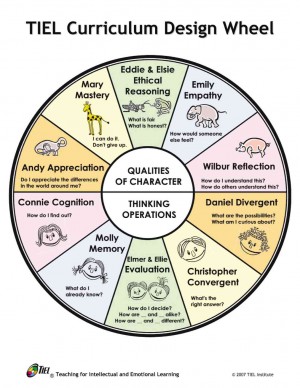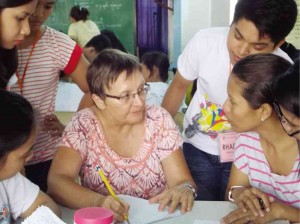Teaching intellectual, emotional learning
When Halley’s Comet appeared in 1986, professor Christy Folsom asked her fifth-grade pupils to write about how they imagined themselves in 2062, when the comet is scheduled to return.
Last year, she was invited to the reunion of her former students from a public elementary school in Oregon, United States. They talked about the comet and their “little books” that contained their predictions for the future.
Nearly 30 years had passed but they still “remembered everything,” she said.
This affirmed Folsom’s view that when students were “totally engaged” and had “extensive understanding” of lessons, they remembered them well.
Folsom is the author of “Teaching Intellectual and Emotional Learning (TIEL): A Model for Creating a Powerful Curriculum.”
She said that by using the TIEL framework, teachers could create lesson plans that would help students retain knowledge longer while developing their thinking skills and social-emotional characteristics.
Educating great thinkers
Folsom, who believes that students can become “great thinkers” with proper education, conducted workshops on project-based learning with teachers on the Infant Jesus Academy (IJA) campuses in Metro Manila and Kalibo, Aklan province.
She also worked with Miriam College in Quezon City and presented the TIEL teaching method to New Castle University in Australia and King’s Academy in Jordan.
Folsom came to Manila to introduce TIEL on the invitation of IJA chair Danny Mallonga, a fellow alumnus at Teacher’s College, Columbia University, who thought TIEL was revolutionary.
Folsom first held workshops for IJA teachers in 2011. She was back in January to do research on TIEL’s effectiveness across cultures and train new teachers on IJA’s four campuses.
She said she also wanted to teach public school teachers in the Philippines about TIEL.
“The IJA teachers were really excited to teach their students how to be more responsible for their learning,” she said.
Folsom, an early childhood and childhood development professor at Lehman College in New York, said she was impressed by the creativity of the teachers in planning lessons and designing projects, like an earthquake simulation activity.
But the teachers needed to do a little better in incorporating multiple disciplines like art, history and mathematics in one project, she said.
“A series of lessons should build on each other so the pupils can make a large project at the end of the semester or school year,” she said.
“The project should be real enough and big enough so the students can learn self-management skills on how to plan, how to set the criteria, how to self-assess the project to make them more in charge of their learning,” she said.
In setting objectives for the students’ projects, she said, teachers must consider the learning context, content or concepts and skills to be learned, the intellectual and emotional processes to be developed, the product that would show that the students understood the concept and how they would evaluate their work based on the criteria they set.
Teachers could ask students to create a website about traditional music, showing how cultural values and beliefs were reflected in music. Or students could do a magazine with articles on topics discussed throughout the semester or school year, she said.
“Teachers do their work in planning and students do work that is memorable,” Folsom said.
In the evaluation, students would see if they achieved their project goals. With the teacher’s guidance, they must be able to spot their mistakes and identify areas for improvement, Folsom said.
The evaluation process would eliminate guesswork for the teacher and prepare students for the real world by learning how to accept failure and solve problems, she said.
No one’s perfect
“Struggling is OK. Perfection is not to be expected,” she said.
Folsom presented the TIEL Curriculum Design Wheel to the IJA teachers through a puppet show as an example of a creative way to discuss lessons.
The TIEL Friends puppet show characters are Connie Cognition, Molly Memory, Elmer and Ellie Evaluation, Christopher Convergent, Daniel Divergent, Andy Appreciation, Mary Mastery, Eddie and Elsie Ethical Reasoning, Emily Empathy and Wilbur Reflection.
Teachers were told to form groups according to the TIEL components that they considered their strengths and where they needed improvement, she said.
Folsom explained that the color-coded TIEL wheel linked psychologist J.P. Guilford’s structure of intellect model and the five qualities of character described by educational reformer John Dewey.
The upper half of the wheel shows the qualities of character, which include appreciation, mastery, ethical reasoning, empathy and reflection, while the lower half are thinking operations: cognition, memory, evaluation, convergent thinking and divergent thinking.
Colors show the link between the cognitive and moral dimensions.
Folsom said her experience teaching preschool and elementary school, deaf and gifted students; handling university teacher preparation and as staff developer and administrator helped her develop TIEL’s conceptual framework.
















